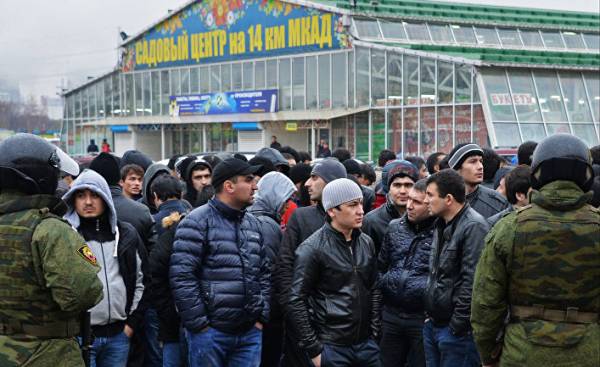
Analysts of the savings Bank, including Anton Struchenevsky, in his report said: “If the wage level in Russia was attractive to immigrants even in 2015-2016, it is likely that migration into the country will rise as soon as the Russian economy will enter a phase of rapid growth.”
Due to the large influx of labor force to Russia that prevails in the local labour market tensions abated. Moreover, it contributes to the reduction of the pressure of inflation on the economy, which finally, after two years of stagnation, started to increase.
The flow of migrants to Russia continued even after the reduction of wages in the country. Moreover, a currency crisis in the country, which began in 1998, led to the fact that the level of remuneration was lower than in other large developing countries such as Brazil and China.
In 2015 Russia shared with Germany second in the world as a country which is the most attractive destination for international migration. According to the statistical Agency, during the last two years the number of migrants amounted to just under 10 million people and annual growth — 18% in 2016 and, respectively, 17% in 2017.
Analysts of the savings Bank, including Anton Struchenevsky, in his report said: “If the wage level in Russia was attractive to immigrants even in 2015-2016, it is likely that migration into the country will rise as soon as the Russian economy will enter a phase of rapid growth.”
Last week published data showing an unexpected decline in unemployment in the country. In March, he reached 5.4%, which is the lowest this year. A month earlier the same indicator was at the level of 5.6%.
Real wages in the country rose by 1.5 percent, which was below expectations of economists surveyed by Bloomberg. At the same time retail sales fell to the lowest in 27 months.
Even after the failed economic leap in Russia, which was caused by the collapse of prices for resources, especially oil, the labor market in the country is fully “absorbed” due to the increase in the number of elderly and the demographic weakness of millions of workers from all over the former Soviet Union.
According to Renaissance Capital, after the fall of the ruble by 40% in mid-2014, the salary in the country was very close to the level of wages in China. These figures are comparable with the situation after the fall of the tsarist Empire.
The decline in nominal exchange rates led to the fact that wages in the industrial sector decreased by 30-35% than in China in 2015-2016. Last week first Deputy Chairman of the Central Bank Ksenia Yudaeva added that even after the increase and stabilization of the ruble, and the absence of any change in China, wage growth in Russia this year will continue to lag behind the level of wages in China is about 20%.
Last year after a 15-month reduction in the indices of real wages finally there are positive trends. That is why the Central Bank focused its attention on the increasing risk of inflation due to higher wages.
However, after meeting regarding the level of interest rates this year, the Bank of Russia gave to understand that now risks are small.
In March, after a decline in the cost of loans for the first time after 6 months of the policy repeated the phrase, which is used in February: “a significant annual growth of wages contributes to the gradual increase in consumer spending without creating additional inflationary pressure.”
The percentage of migrants
According to the rector of the Higher school of Economics Yaroslav Kuzmin, currently, the number of migrants in the labour market remains at the level of 5-7%.
By 2016, the number of able-bodied population of Russia amounted to 76,6 million people, as well as in 2015.
In light of the demographic situation in the country of Russia for future years will continue to rely on migrants.
According to Alexei Kudrin, who served as Minister of Finance from 2011-2015, for the next 15 years the number of able-bodied population will decrease by about 10 million people.
According to the Federal state statistics service, China, North Korea, Vietnam, Turkey and Serbia over the last three months of 2016 was the largest source of labour coming from outside the former Soviet republics.
Economists Sberbank, the report noted that “real growth in wages must be due to increased productivity in the country because of the workforce here will be sufficient to meet any increase in demand. Thus, it appears that the labour market should not be high inflation risks.”







